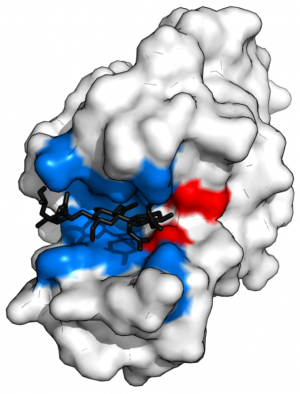 I always found it fascinating that a good 8% of the human genome is made up of viral invaders that have incorporated themselves into our germ cells over the past several million years. This means they can now be passed down to our offspring in the same manner as our own innate genetic material. Most of these HERV’s are inactive fragments and some have been adapted to actually become useful to the host. This is not true of all of them however, and the more recently introduced HERV-K family (within the last 800,000 years) could still be replicating and perhaps causing disease in humans (as they are known to do in certain animal populations). There is evidence that the HERV-K106 may have entered the human population as recently as 150,000 years ago.
I always found it fascinating that a good 8% of the human genome is made up of viral invaders that have incorporated themselves into our germ cells over the past several million years. This means they can now be passed down to our offspring in the same manner as our own innate genetic material. Most of these HERV’s are inactive fragments and some have been adapted to actually become useful to the host. This is not true of all of them however, and the more recently introduced HERV-K family (within the last 800,000 years) could still be replicating and perhaps causing disease in humans (as they are known to do in certain animal populations). There is evidence that the HERV-K106 may have entered the human population as recently as 150,000 years ago.
HERV’s are a subclass of a type of gene called a transposon which can be moved around to serve a vital role in gene regulation and expression. Some researchers believe that, turning the tables around, some retroviruses may actually be transposons that have exited the genome and gone “freelance”! Some researchers theorize that HERV’s may play a role in schizophrenia, ALS and multiples sclerosis in humans.
Currently the koala retrovirus, KoRV, is causing an epidemic of KIDS, (koala immune deficiency syndrome) which is in the active process of working itself into the koala genome, i.e. becoming an ERV. Virtually 100% of koalas in northern Australia are affected though some virus free populations still exist in the south. Affected koalas have very high rates of malignancies and compromised immune systems. Experts believe that virtually all the koalas in Queensland could be wiped out by KIDS within 15 years.
An added twist to the HERV story is that many people actually believe an HERV-K virus can turn a human being into a real vampire. The so-called K7 virus was used as a plot device in the 2002 movie, Reign of Darkness. The idea that the virus is real has entered the vampire sub-culture and there are even people seeking to get infected by it!
Photo Credit
Bela Lugosi – Dracula – Wikimedia Public Domain
Enzyme Structure Wikimedia Creative Commons



Please Share Your Thoughts - Leave A Comment!